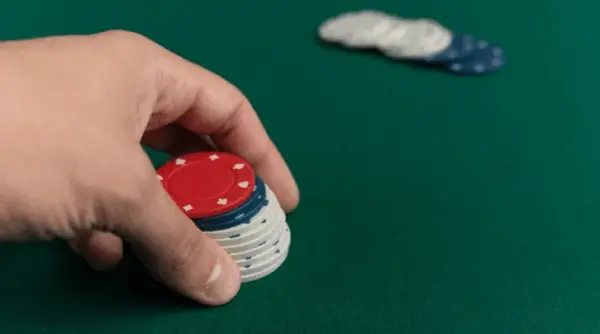Reverse implied odds calculate potential future losses after calling a bet when your hand fails to improve or if an opponent’s hand becomes stronger. This concept stands in contrast to implied odds. Implied odds focus on potential future winnings if you hit a strong hand.
Playing Environment
Crafting an optimal environment to play Texas Hold ’em Poker responsibly demands balancing various elements to minimize distractions. A comfortable playing space is vital. Adjust room temperature and lighting for focus. Use ergonomic seating to support posture.
Disabling non-essential devices and turning off notifications can help keep focus. Fully charged devices prevent interruptions. A conducive atmosphere enhances poker performance by consciously managing physical and digital factors.
Strategic Considerations
Reverse implied odds are determined by evaluating the strength of your draw relative to the likelihood of an opponent drawing stronger. High reverse implied odds weaken implied odds. They often make it correct to fold if correct pot odds aren’t available for calling on a draw.
The board texture and your opponent’s range are essential components. Take holding a Jack and a five of diamonds on a ten of hearts, five of hearts, and a nine of clubs flop, for instance. A Jack on the turn completes several potential straights and flush draws in your opponent’s range. This turn then escalates reverse implied odds.
Position and stack depth are also factors. Playing from the blinds usually results in worse implied odds and escalates reverse implied odds. Deeper stacks enhance the potential for both implied and reverse implied odds.
Practical Application

Utilizing reverse implied odds requires estimating opponent behavior in future betting rounds. Proceeding might still be wise if the current pot odds appear favorable despite reverse implied odds. Aiming for an inexpensive showdown or considering a fold is advisable when the pot odds are marginal and the board is draw-heavy.
Often, reverse implied odds lead to winning the minimum and losing the maximum if opponents complete their draws. This situation can heavily punish overly aggressive players standing to lose seriously should an opponent hit their draw.
Player-Dependent Metrics
Reverse implied odds are highly player-dependent. Players who often call bets provide higher implied odds but heighten reverse-implied odds if they draw. Conversely, tight players can minimize both implied and reverse implied odds.
Deeper stacks increase potential losses and winnings. Larger stacks create more capacity for reverse implied odds due to the higher amounts at risk when an opponent’s draw completes.
Hand Selection and Range Building
Choosing hands like small pocket pairs and suited connectors can benefit from implied odds. However, they may suffer from reverse implied odds if they don’t improve or if stronger hands emerge in an opponent’s range. Dominated Broadway cards like The King and Jack of Spades often face elevated reverse-implied odds. This is because they are prone to winning modest pots but losing large ones.
Adjusting ranges based on reverse-implied odds helps formulate a higher success strategy. Calls with weaker hands with lower reverse implied odds can become more profitable than sticking with stronger hands vulnerable to being outdrawn.
Considering reverse- implied odds involves planning for future betting rounds. Reducing your risk by aiming for the showdown as inexpensively as possible or even folding in draw-heavy board situations with marginally made hands may prevent considerable losses.
Practicing such considerations helps integrate the broader strategy of reverse -implied odds. Players recognizing the effect of these odds can refine decision-making processes to protect their stakes better.
